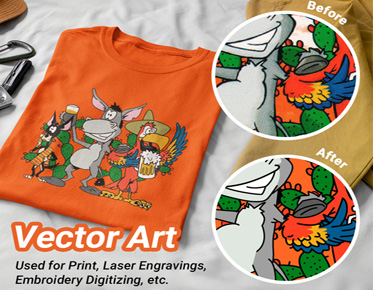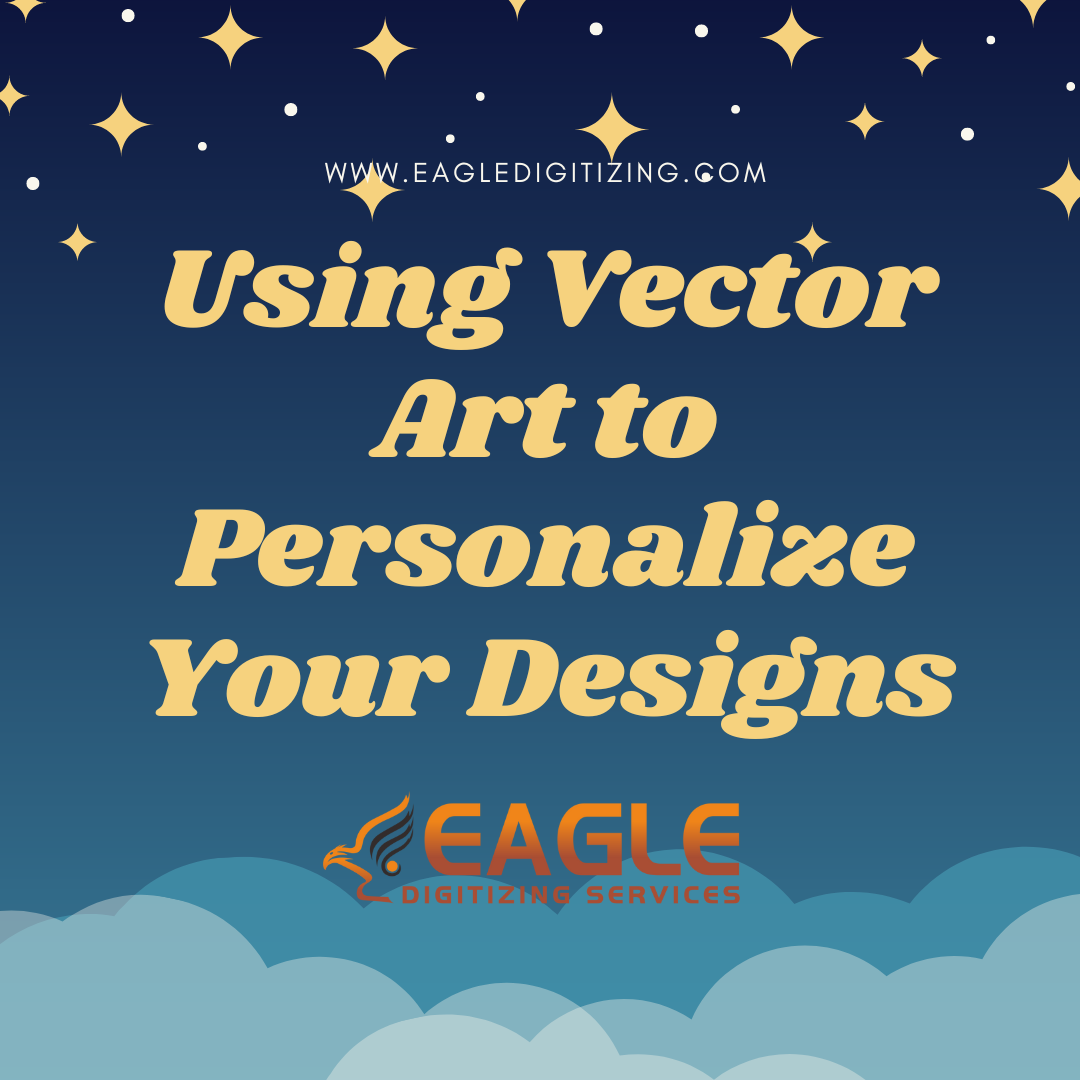The Easy Route to Learning Vector Art as a Beginner
Why
Vector Art is the Perfect Starting Point for Creatives
In the world of digital design, vector art stands as one of the most accessible and
versatile tools for creatives. Whether you’re a budding designer or someone
looking to switch to digital mediums, vector art is the perfect entry point.
With its scalability, precision, and endless potential for creativity, it
offers an accessible yet powerful way to express artistic ideas. But why is it
so perfect for beginners? It’s simple—vector art is intuitive, allows for
endless experimentation, and comes with a lower barrier to entry compared to
other forms of digital artwork. If you’ve ever been curious about creating
stunning, professional-looking visuals, vector art might just be the key.
Understanding the Basics: What is Vector Art and Why Should You Care?
At its core, vector art is a form of digital art created using paths,
which are defined by mathematical equations. Unlike pixel-based images which
are made up of grids of tiny squares (pixels), vector images are based on
lines, curves, and points. These shapes are resolution-independent, meaning
they can be resized without losing quality. This quality alone makes vector art
incredibly valuable for designers who need their work to look sharp on any
medium, from business cards to billboards. Understanding vector art isn't just
about learning a new style—it's about tapping into the endless design
possibilities it offers.
The Key Differences Between Raster and Vector Art
Pixel vs. Path: The Fundamental
Distinction
The primary difference between raster (pixel-based) and vector art
lies in their structure. Raster images are made up of individual pixels, each a
tiny square of color that combines to form the full image. This makes raster
art well-suited for photographs or highly detailed images but prone to
pixelation when enlarged. On the other hand, vector art is based on
paths—mathematical equations that define shapes, colors, and lines. The result?
Scalable, high-quality images that don’t lose clarity regardless of size.
Why Vector Art Stands Out for
Design Flexibility
The true magic of vector art lies in its flexibility. Whether you're
designing a logo, an illustration, or even an infographic, the ability to
resize and modify vector artwork without any loss of fidelity is a
game-changer. For businesses, this means they can create a logo that works on a
small social media icon or a large billboard without any concerns about pixelation.
For artists, the smooth lines and shapes allow for more creative freedom and
precision in their designs.
Getting Started with the Right Tools
The Best Software for Beginners:
Adobe Illustrator, Inkscape, and More
Starting with the right tools is essential for your journey into
vector art. Adobe Illustrator is the industry standard for vector design, packed with powerful features. However,
if you're looking for a free alternative, Inkscape offers a surprisingly robust
set of tools, and it’s an excellent choice for beginners on a budget. Both
tools come with tutorials and communities that can help you get started, so
pick one that suits your needs and dive in!
Free vs. Paid Tools: Which
Option Fits Your Needs?
While paid tools like Adobe Illustrator offer premium features and
professional-level tools, free software like Inkscape and Gravit Designer can
help you learn the ropes without breaking the bank. If you’re just starting and
testing the waters of vector design, opting for a free tool might be a smart
move. But once you're comfortable and ready to scale your skills, transitioning
to a paid tool might open up more advanced possibilities for your projects.
Setting Up Your Workspace for Success
Customizing
Your Digital Canvas for Smooth Workflow
A cluttered workspace can stunt your creativity. That’s why
customizing your digital canvas is crucial for a smooth design experience.
Adjusting the size, grid layout, and rulers will help keep your work organized
and proportional. Most vector design software allows for highly customizable
interfaces—make sure to arrange your workspace in a way that feels intuitive to
you, whether that means having tools easily accessible or keeping your artboard
spacious and uncluttered.
Organizing
Your Tools and Panels to Maximize Efficiency
Organizing your tools and panels helps to streamline the creative
process. In programs like Illustrator or Inkscape, you can customize which
tools and panels are visible based on what you use most often. This not only
keeps your workspace tidy but also ensures that you can access the features you
need in a split second, making your workflow more efficient.
The Core Elements of Vector Art
Paths, Anchors, and Handles: The
Building Blocks
At the heart of vector art are paths. Paths are lines that connect
points, known as anchors, with curves or straight edges. Each anchor can be
adjusted using handles, allowing you to tweak the path's shape and direction.
Understanding how to manipulate paths is crucial for mastering vector art
because these are the building blocks that make up every design.
Shapes, Lines, and Curves:
Understanding Basic Design Principles
Vector art isn’t just about straight lines—it’s about mastering shapes
and curves to create stunning visuals. Whether you're working with basic
circles, squares, or more complex organic shapes, knowing how to manipulate
them will allow you to create anything from simple icons to intricate
illustrations.
Mastering the Pen Tool: Your New
Best Friend
The Pen tool is your best friend in vector art. It’s the tool that
enables you to draw precise lines and curves, giving you total control over the
design process. Mastering the Pen tool might seem challenging at first, but
once you get the hang of placing anchors and adjusting handles, it becomes your
most powerful tool in creating sophisticated vector artwork.
Why Simplicity is Key in the Early Stages
Start
Small: Easy Projects to Begin Your Vector Art Journey
When starting, simplicity is key. Begin with easy, manageable projects
such as designing basic logos or icons. These projects will help you
familiarize yourself with the tools and concepts of vector art without
overwhelming you. As you grow in confidence, you can tackle more complex
designs.
Embracing
the Power of Minimalism in Design
Vector art lends itself perfectly to minimalistic design. The clean
lines and simple shapes allow you to create striking visuals without
unnecessary clutter. Embracing this style early on can help you focus on the
core elements of design and avoid getting bogged down by complexity.
Experimenting
with Geometric Shapes and Simple Forms
Experimenting with geometric shapes and simple forms is a great way to
get comfortable with vector tools. Try combining
circles, squares, and triangles to form abstract designs or patterns. These
shapes are the foundation for more complex compositions, and mastering them
will set you up for success.
Learning to Use Layers Like a Pro
Understanding Layers in Vector
Art: A Game-Changer for Organization
Layers are the secret weapon to staying organized in vector art. Each
element of your design can exist on a separate layer, making it easier to
adjust, move, or delete elements without affecting the rest of your artwork.
Layers provide clarity and control, allowing you to work on one part of your
design while keeping other parts untouched.
How to Use Layers to Keep Your
Artwork Clean and Manageable
By assigning each element—whether it’s a shape, line, or text—to its
layer, you prevent your artwork from becoming a jumbled mess. This level of
organization makes editing easier and helps you maintain a clean workflow.
Combining and Grouping Elements
for Complex Designs
Once you’ve created multiple elements on different layers, combining
and grouping them allows you to manage more complex designs. Grouping related
items makes it easier to scale, reposition, or color them without accidentally
affecting other parts of your design.
Mastering Color Theory for Stunning Vector Art
How
to Choose the Right Color Palettes
Your design may succeed or fail depending on the color scheme you
choose. Whether you're going for a bold, vibrant look or a subtle, muted tone,
color sets the mood for your artwork. Learn the basics of color theory, such as
complementary and analogous color schemes, to create visually pleasing
compositions.
The
Power of Gradients and Color Blending in Vector Design
Gradients can add depth and dimension to your vector art, creating a
sense of realism or smooth transitions between colors. Experimenting with
gradient fills and color blending will help bring your designs to life, making
them feel more dynamic and engaging.
Using
Contrast and Saturation to Make Your Artwork Pop
Contrast and saturation can be used to draw attention to certain areas
of your design. High contrast can highlight important elements while varying
levels of saturation help create a more dynamic range within your artwork. Play
with these tools to make your designs stand out.
The Magic of Shapes: Turning Simple Objects into Complex Designs
Creating Complex Designs from
Basic Geometric Shapes
It’s surprising how much you can accomplish by combining basic shapes.
By stacking, overlapping, and manipulating geometric forms, you can create
intricate, professional designs that look much more complex than they are.
Start by mastering the art of shape manipulation to form beautiful and
sophisticated vector art.
Using the Pathfinder Tool to
Combine and Subtract Shapes
The Pathfinder tool is one of the most powerful features in vector design software. It allows you to combine,
subtract, or intersect shapes to form new ones. This tool opens up endless
possibilities for creating complex designs with minimal effort.
Exploring Symmetry and Balance
for Polished Artwork
Symmetry and balance play a key role in the visual appeal of your
artwork. Whether you’re designing a logo, a pattern, or an illustration, using
symmetry can make your design feel more cohesive and polished.
Adding Text to Your Vector Art
How to Choose Fonts That
Complement Your Design
When adding text to your vector art, choosing the right font is
crucial. Your font should complement the style of your design, whether it’s
bold and modern or soft and playful. Take time to explore different font
options and pair them with your vector elements for a cohesive look.
Creating Custom Typography from
Scratch
For a more personalized touch, try creating custom typography. With
vector software, you can manipulate each letter to fit seamlessly into your
design, giving it a unique flair that can’t be achieved with standard fonts.
Wrapping Text Along Paths for
Unique Effects
One of the best things about vector art is the ability to wrap text
along paths. This technique lets you shape text around circles, lines, and
other elements, creating dynamic effects that integrate smoothly with your
artwork.
Tips for Improving Your Drawing Skills
Practice Makes Perfect: Start
With Simple Sketches
The key to becoming proficient in vector art is practice. Start with
simple sketches to refine your skills and get comfortable using the tools.
These quick sketches don’t have to be perfect—they’re just an exercise to help
you improve.
Learning to Trace: Using
Reference Images as Guides
Tracing over reference images is a great way to hone your vector art
skills. By replicating shapes, lines, and designs from existing artwork, you’ll
learn how to manipulate paths and shapes more effectively.
Digital Drawing Tablets vs.
Mouse: Which is Better for Beginners?
When it comes to drawing in vector art,
a digital drawing tablet is an investment that can significantly improve your
workflow. While it’s possible to use a mouse, tablets offer precision and
fluidity that make the drawing process more intuitive.



.png)